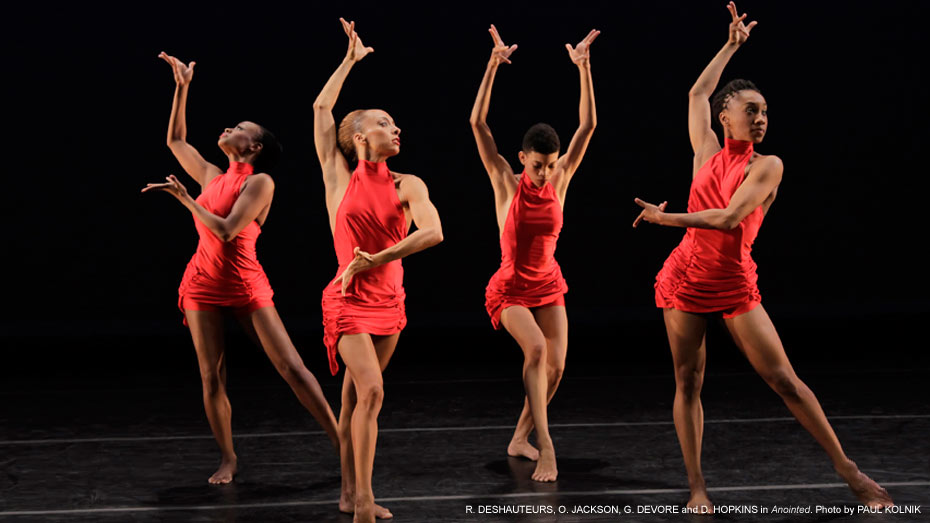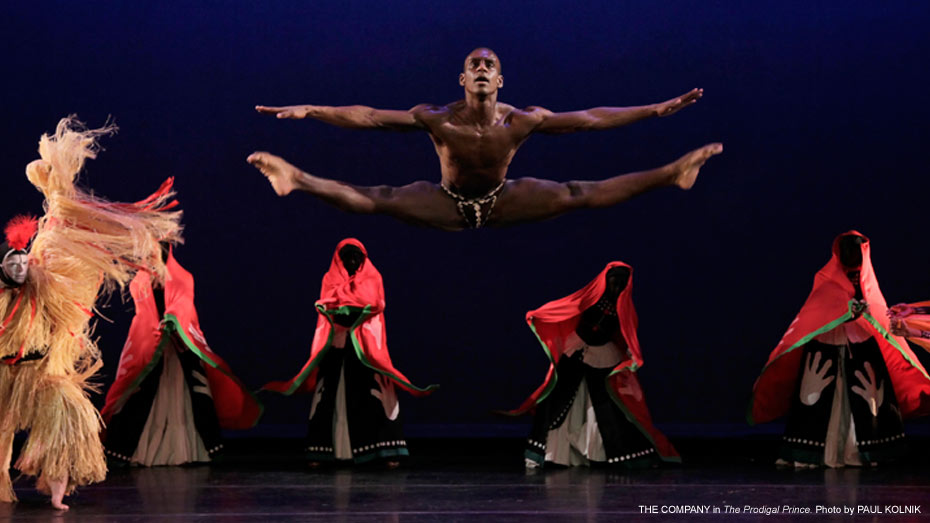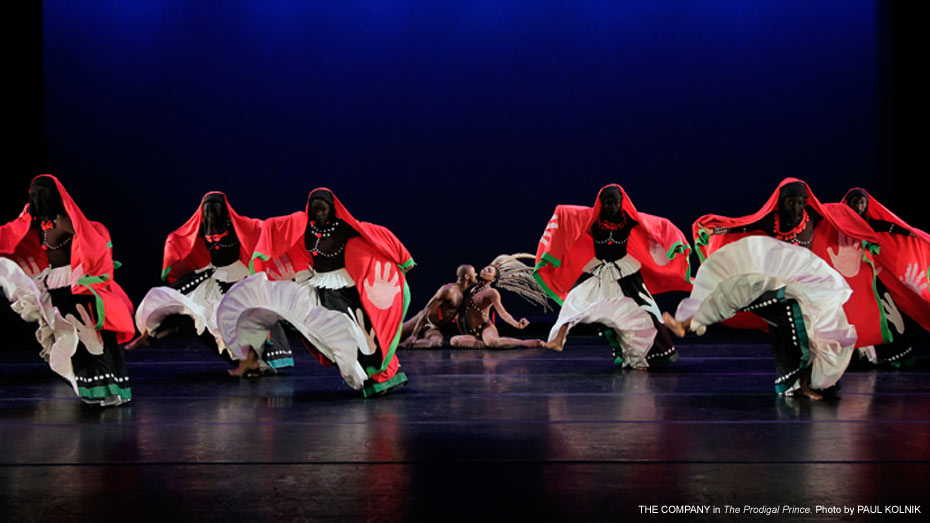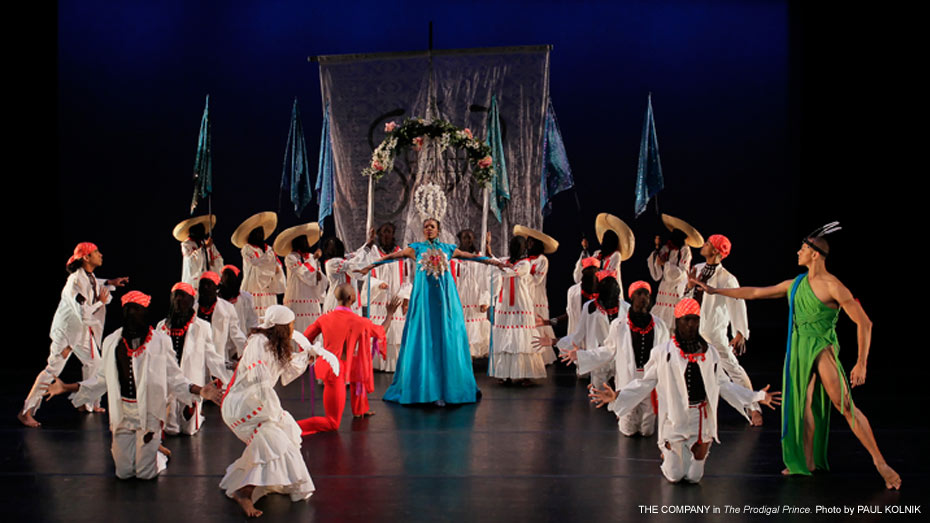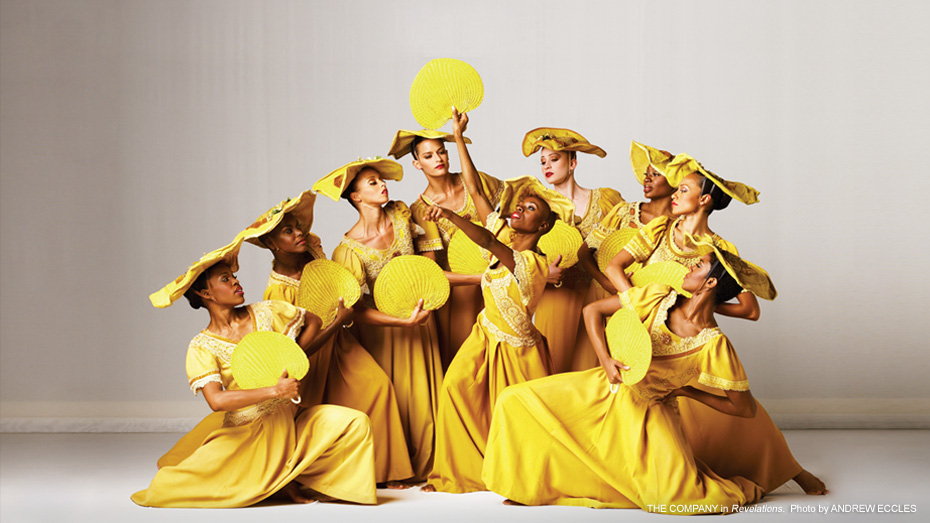Diversity Through Dance
Anthony Ventimiglia
New York City has always been known for its incredible diversity- hundreds of cultures and ethnicities are represented in Manhattan alone. As a four-month resident of the capital of the world, I have seen such diversity in many of the things the Big Apple is famous for: cuisine, entertainment, language, and athletics. However, as a student studying the arts, I was hard-pressed to find similar variety in the many museums and theaters of the city. I often found myself wondering: “Where is the diversity in art?” It did not take long for this question to be answered. In fact, I was recently treated to a magnificent dance performance by the Alvin Ailey American Dance Company at New York City Center. The company, formed in 1958 by the dancer and choreographer of the same name, was established in order to better enable African Americans to participate in dance. On December 9th, 2010, the company performed remarkable renditions of Christopher L. Huggins’ “Anointed”, Geoffrey Holder’s “The Prodigal Prince”, and Alvin Ailey’s classic “Revelations”. The show that the troupe put on that night proved not only that diversity was present in the arts, but also that it is pushing the boundaries of the field itself.
As I settled into my seat on Thursday night, I thought back to the previous day. Just 24 hours prior to the start of the show, I had been able to tour the Joan Weill Center for Dance, the center of the Alvin Ailey program. During the tour, I was shown several dance studios, a convertible theater, and even physical therapy room. With such great facilities, I thought, the dancers of Alvin Ailey surely should impress. I was not mistaken.
The performance on Thursday night commenced with Christopher L. Huggins’ “Anointed”, the first part of which was a duet entitled “Passing”. In this piece, Huggins highlighted the already conspicuous differences in stature of Linda Sims and Jamar Roberts. With the music of Moby and Sean Clements setting the mood, the muscular Roberts gracefully lifts and twirls the petite Sims through a variety of motions.
 Source: New York Times
Source: New York Times
At the end of the piece, Roberts walks offstage away from a visibly upset Sims into an area of simulated white light to signify passage into the next phase of life. The onstage lighting effects, coupled with the music and Sims’ distress served to create a mood that was beautiful in its melancholy. I felt that the piece was a grandiose portrayal of the legacy of Ailey and his passing on of the torch of the Ailey Company to Judith Jamison. In part 2 of the performance, entitled “Sally Forth”, Sims returns along with four women in a colorful and upbeat routine that stood in sharp contrast to the more reserved “Passing”. Finally, in a third act called “52 and counting” (an obvious reference to the company’s tenure), the female performers are joined by four men in red. To my surprise, Roberts soon reappears, this time clad in white and much more energetic.
While perhaps not as talented a choreographer as Alvin Ailey, Christopher Huggins does have one thing in common with the legend of dance: story-telling. Although not a revolutionary work of art, “Anointed” provides a brief synopsis of Ailey’s 50-year history while simultaneously conveying emotions of sorrow and joy. The piece ends on a good note however, as Roberts (representing Ailey) is depicted as watching his legacy flourish under Sims (Jamison) as she prepares to pass on the torch herself.
After a brief intermission, the next piece that was performed was Geoffrey Holder’s “The Prodigal Prince”. This dance tells the story of Hector Hyppolite (played by Kirven James Boyd), a painter and high priest of the Haitian religion. It starts off depicting Hyppolite’s visions of the Voudoun goddess Erzulie and St. John the Baptist (played by Briana Reed and Clifton Brown, respectively). As a faint drumming sound is heard, the two divine figures appear and foretell of a great fortune for the artist against the backdrop of a starry night. Although their message is positive, their movements and attire are suspicious and bizarre, enshrouding the scene in mystique. The trio is soon joined by a group of nefarious-looking women with their faces veiled in black, which circle Hyppolite as he interacts with Spirit/Pre-Savanne (Michael McBride). Another character, The Mambo/Le Serviteur, appears along with the women and dances with Hyppolite with a dove in hand. A feather is plucked from the bird, and is given great significance throughout the performance as a symbol of God.
Ironically, I enjoyed every aspect of Holder’s piece aside from the dancing itself. There was simply too much movement occurring at the same time to get a true appreciation for Holder’s choreography. However, there were a few notable exceptions; Michael McBride’s talent as The Spirit stood out even amongst the excessive amount of dancers on stage. The aspects of the performance that really appealed to me where the costumes and music. What Holder lacked in his presentation of his choreography, he more than made up for in these categories. The music set a suitable pace for such a fast and aggressive piece, and had ritualistic connotations that were indicative of the actions taking place on stage. Even more impressive than Holder’s music was the costumes he himself designed for the performers. “The Prodigal Prince” was truly a feast for the eyes, from St. John’s green tunic to Erzulie’s light-blue headdress. The Spirit’s getup was even more impressive, it was made of a straw-like material that rippled with McBride’s every motion. The vivid, exotic colors of the apparel in “The Prodigal Prince” was without question one of the most memorable features of the night.
 Source: New York Times
Source: New York Times
The final act of the night was Alvin Ailey’s classic “Revelations” which was partitioned into three sections, the first of which was “Pilgrim of Sorrow”. I watched as the dancers bowed their heads in despair and made slow, somber movements. The dancing conveyed a sense of oppression and isolation reminiscent of how the slaves must have felt centuries ago. My favorite portion of this section was “Fix Me Jesus”, a duet that exemplified the trust between a woman (Aisha Mitchell) and her pastor (Amos J. Machanic, Jr.) through a series balancing movements involving both dancers. The next section was entitled “Take Me to the Water”, which was in my opinion the best dance in “Revelations” and possibly the entire show. In it, a young couple is baptized in a river-symbolized by long sheets of blue and white flowing backstage- by a religious leader with a large umbrella. The dancing, music, and energy in this work aggregated to create a positive, hopeful tone that spoke of such a spiritual rebirth.
 Source: new-york.freshguide.com
Source: new-york.freshguide.com
The final performance, “Move, Members, Move”, was definitely true to its name: audience members swayed and clapped with the beat of Howard R. Roberts’ music. It starts off with a trio of men (“Sinner Man”) and moved into the powerful “Rocka My Soul” section (after a brief encore), in which dancers held stools to recreate a church gathering.
Similar to my reception of Holder’s work, the choreography of “Revelations” was not the aspect of the performance I most appreciated. Although only my first viewing of the 50 year-old piece, I could tell that many elements appear outdated. While I understand that “Revelations” is a tradition and a preservation of the past, in the future audiences may begin to find it hackneyed. Hopefully the next artistic director, presumably Robert Battle, will successfully adapt “Revelations” to modern dance while retaining the message it sends. Besides the rather unimpressive dancing, I believe the night was a great success. The colorful costumes, unorthodox props, use of West African percussion music, and even the lighting contributed to a wonderful showcase of African-American culture and its influences on dance.

